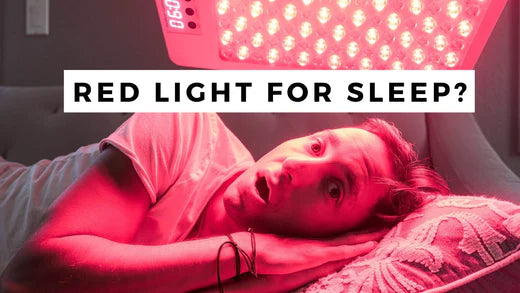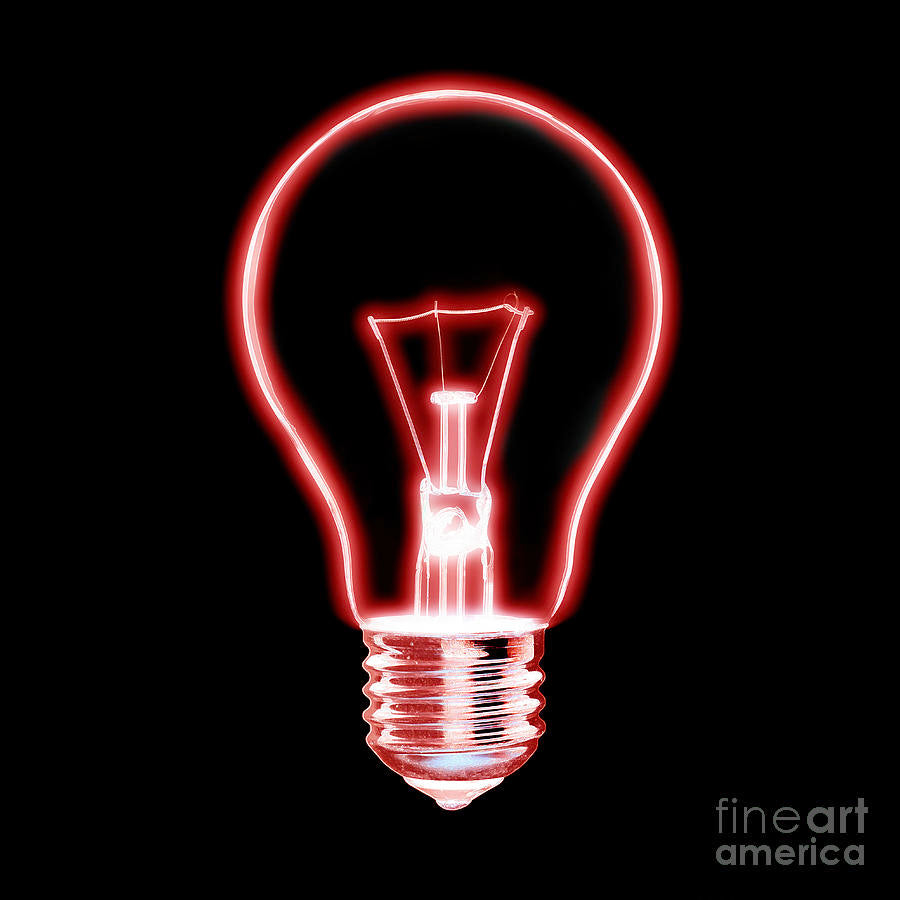
The Benefits of Sleeping with Red Lights On
Understanding the Science of Light and Sleep
Before diving into the benefits of red lights for sleep, it's important to understand the relationship between light and sleep. Light plays a crucial role in regulating our sleep-wake cycle, also known as the circadian rhythm. Our bodies are naturally synced with the rising and setting of the sun.
Exposure to bright, blue light during the day helps us stay alert and awake. This is because blue light stimulates special cells in our eyes called photoreceptors, which send signals to our brain to suppress the production of melatonin, a hormone that helps regulate sleep. By keeping melatonin levels low during the day, our bodies are able to maintain wakefulness and stay focused.
Conversely, exposure to dim, warm light in the evening signals to our bodies that it's time to wind down and prepare for sleep. This is because as the sun sets, the amount of blue light in the environment decreases, allowing melatonin production to increase. As melatonin levels rise, we begin to feel drowsy and ready for bed.
The Role of Melatonin in Sleep
One key hormone involved in sleep regulation is melatonin. Melatonin is naturally released by the pineal gland in the brain as darkness sets in. This hormone helps signal to our bodies that it's time to sleep. However, exposure to bright light, particularly blue light, can suppress melatonin production, making it harder to fall asleep.
When we are exposed to blue light in the evening, such as from electronic devices like smartphones and tablets, it can disrupt our natural melatonin production. The blue light emitted by these devices is similar to the blue light present in daylight, tricking our brain into thinking it's still daytime. As a result, our bodies may struggle to transition into sleep mode, leading to difficulties falling asleep and potentially affecting the quality of our sleep.
How Different Light Colors Affect Sleep
Not all light colors are created equal when it comes to their impact on sleep. Blue and white lights, which are high in the blue light spectrum, are known to disrupt sleep by suppressing melatonin production. On the other hand, red lights have a longer wavelength and are less likely to interfere with melatonin.
Red light has been found to have minimal impact on melatonin levels, making it a better choice for creating a sleep-friendly environment. In fact, some studies suggest that exposing ourselves to red light in the evening may even enhance melatonin production, helping us fall asleep more easily and promoting a more restful sleep.
Additionally, red light has been shown to have a calming effect on the nervous system, helping to reduce stress and anxiety, which can also contribute to better sleep. This calming effect is believed to be due to red light's ability to stimulate the production of endorphins, the body's natural feel-good chemicals.
It's important to note that while red light may be beneficial for sleep, it's still important to limit exposure to any type of light, especially bright or blue light, in the hours leading up to bedtime. Creating a dark and quiet sleep environment can help optimize our sleep quality and promote a healthy sleep-wake cycle.
The Advantages of Red Light for Sleep
Now that we understand the science behind light and sleep, let's explore the specific benefits of red light for sleep:
Enhancing Sleep Quality with Red Light
Research has shown that exposure to red light can improve sleep quality. Unlike blue light, which can interfere with deep sleep, red light has a minimal impact and allows for more restorative sleep. This can leave you feeling more refreshed and energized in the morning.
When you expose yourself to red light before bedtime, it stimulates the production of melatonin, a hormone that regulates sleep. Melatonin helps to synchronize your internal body clock, making it easier for you to fall asleep and stay asleep throughout the night. By promoting the production of this essential hormone, red light can enhance the overall quality of your sleep.
Furthermore, red light has been found to have a calming effect on the mind and body. It helps to reduce stress and anxiety, creating a more relaxed state conducive to sleep. The soothing nature of red light can help you unwind after a long day, allowing you to drift off into a peaceful slumber.

Red Light and Its Impact on Circadian Rhythm
Using red lights in the evening can help maintain a healthy circadian rhythm. By mimicking the natural warm light of sunset, red lights signal to your body that it's time to wind down and prepare for sleep. This can help regulate your sleep-wake cycle and improve overall sleep patterns.
Our bodies are naturally attuned to the cycles of day and night. The presence of blue light, especially from electronic devices, can disrupt this natural rhythm and confuse our internal clocks. However, red light has a longer wavelength and lower intensity, making it less disruptive to our circadian rhythm.
Exposure to red light in the evening helps to suppress the production of cortisol, a hormone that keeps us alert and awake. By reducing cortisol levels, red light encourages the release of melatonin, promoting a sense of relaxation and preparing the body for sleep. This natural transition from wakefulness to sleep can lead to a more restful and rejuvenating night's rest.
Additionally, red light has been found to have a positive impact on the production of other hormones that regulate sleep, such as serotonin. Serotonin is known as the "feel-good" hormone, and its presence in the brain helps to promote feelings of happiness and well-being. By increasing serotonin levels, red light can contribute to a more positive mood and a sense of tranquility before bedtime.
In conclusion, the advantages of red light for sleep are numerous. From enhancing sleep quality to positively influencing our circadian rhythm, red light offers a natural and effective way to improve our overall sleep experience. By incorporating red light into our evening routines, we can create a soothing and conducive environment for restful sleep, leading to better health and well-being.
The Psychological Benefits of Red Light
Beyond its impact on sleep, red light has psychological benefits that can contribute to better sleep:
Reducing Stress and Anxiety for Better Sleep
Studies have found that exposure to red light can help reduce stress and anxiety levels. By creating a soothing and calming atmosphere, red lights can help quiet the mind and promote relaxation, leading to a more peaceful sleep experience.
In today's fast-paced and stressful world, finding ways to unwind and relax is essential for maintaining good mental health. Red light therapy has emerged as a popular method for reducing stress and anxiety. The warm and gentle glow of red light creates a serene environment that can help individuals feel more at ease. This calming effect can be particularly beneficial before bedtime, as it prepares the mind and body for a restful night's sleep.
Furthermore, research has shown that exposure to red light stimulates the production of endorphins, also known as "feel-good" hormones. These natural chemicals in the brain help to alleviate stress and promote a sense of well-being. By incorporating red light into your sleep routine, you can effectively reduce stress and anxiety, leading to a more rejuvenating sleep experience.
The Mood-Enhancing Effects of Red Light
Red light has been associated with positive mood enhancement. It has the ability to create a warm and cozy ambiance, which can elevate your mood and make your sleeping environment more pleasant. Feeling comfortable and content in your surroundings can make it easier to fall and stay asleep.
Imagine stepping into a room bathed in a soft, warm red glow. The gentle light washes over you, creating a sense of tranquility and contentment. This mood-enhancing effect of red light can have a profound impact on your overall well-being, including your sleep quality.
Scientifically, red light has been found to stimulate the production of serotonin, a neurotransmitter that plays a key role in regulating mood. Increased serotonin levels are associated with feelings of happiness and relaxation. By incorporating red light into your sleep environment, you can create a soothing atmosphere that promotes a positive mood, helping you unwind and prepare for a restful night's sleep.
Furthermore, the warm and cozy ambiance created by red light can evoke feelings of comfort and security. This can be particularly beneficial for individuals who struggle with anxiety or have difficulty winding down at the end of the day. By surrounding yourself with the gentle glow of red light, you can create a peaceful sanctuary that promotes relaxation and tranquility, setting the stage for a peaceful and uninterrupted sleep.

Practical Ways to Incorporate Red Light in Your Sleep Routine
Now that you're aware of the benefits, here are some practical ways to incorporate red light into your sleep routine:
Choosing the Right Red Light Bulbs
When using red lights, opt for light bulbs or lamps with a warm or red hue. Avoid bright and intense red lights, as they may still have a stimulating effect. Look for options that emit a soft and gentle glow to create a relaxing atmosphere in your bedroom.
Best Practices for Using Red Light Before Bed
To reap the benefits of red light for sleep, consider using it in the hour or two leading up to bedtime. Dim the overhead lights in your bedroom and replace them with red lamps or string lights. You can also try using a red light therapy device, which is designed specifically for sleep enhancement.



